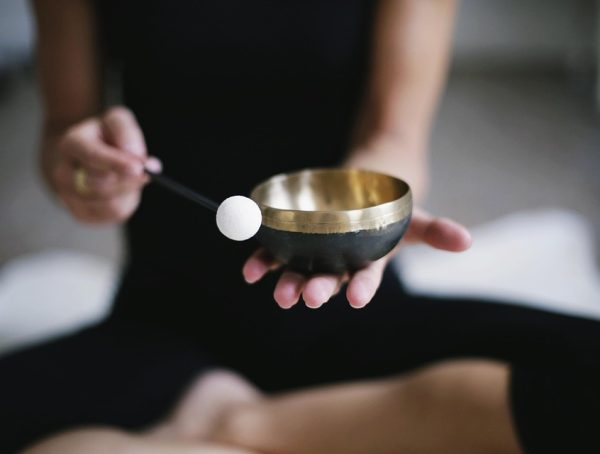Benefits of Using Mantras in Daily Meditation Practice
In our fast-paced world, finding moments of peace and clarity can be challenging. Many of us recognize the importance of meditation, yet the practice can sometimes feel daunting or unstructured. One effective way to enhance meditation experiences is through the use of mantras. A mantra is a word, phrase, or sound that is repeated to aid concentration during meditation. This article explores the benefits of incorporating mantras into your daily meditation practice and provides actionable steps to get started.
The Benefits of Using Mantras in Meditation
1. Focus and Clarity
Mantras help to anchor your thoughts and reduce distractions. When your mind starts to wander, repeating a specific mantra can redirect your focus, allowing you to return to a state of mindfulness. This practice encourages clarity and helps you to settle into deeper states of meditation.
2. Stress Reduction
Engaging with a mantra can significantly lower stress levels. The rhythmic repetition of a mantra can create a calming effect, similar to a kind of mental yoga. It allows your brain to shift from an active, busy state to a more tranquil one, where stress melts away and relaxation sets in.
3. Enhanced Self-Awareness
Using mantras can deepen your self-awareness. By choosing a mantra that resonates with your intentions or desires, you can bring your subconscious beliefs to the forefront. This self-exploration can illuminate patterns or obstacles that may be hindering your personal growth.
4. Emotional Healing
Mantras can also serve as tools for emotional healing. For instance, affirmations like "I am enough" or "I am worthy of love" can reshape negative self-perceptions. By consistently affirming these statements during meditation, you cultivate a more positive self-image and reduce self-doubt over time.
5. Spiritual Connection
Many people find that mantras enhance their spiritual practices. Whether you’re seeking a connection to a higher power or looking to foster personal growth, mantras can facilitate this connection, making your meditation experience feel more meaningful and profound.
6. Physical Wellness
Some studies suggest that meditation involving mantras can lead to lower blood pressure, reduced symptoms of anxiety and depression, and improved overall physical health. Engaging in such practices encourages not just mental but also physical well-being, which contributes to living a healthier lifestyle.
Action Steps to Incorporate Mantras in Your Daily Meditation Practice
Step 1: Choose Your Mantra
Select a mantra that resonates with you and aligns with your goals. This could be a traditional word or phrase, a positive affirmation, or even a sound (like "Om") that reflects tranquility. Take some time to consider what you want to achieve through your practice—be it peace, strength, or love.
Step 2: Create a Dedicated Space
Find a quiet space where you can meditate without interruptions. Make this area your sanctuary by keeping it clean and free from distractions. Set up a comfortable seat or cushion, and perhaps light a candle or burn incense to create a serene atmosphere.
Step 3: Set a Regular Schedule
Establish a daily meditation routine that includes your mantra practice. Aim for a minimum of 10 minutes each day, gradually increasing as you become more comfortable. Consistency is key, and integrating meditation into your daily routine makes it an entrenched part of your lifestyle.
Step 4: Begin Your Practice
Sit comfortably, close your eyes, and take a few deep breaths to center yourself. Begin to repeat your chosen mantra, either out loud or silently in your mind. Let the sounds resonate within you and allow your focus to gather around the repetition. If your thoughts drift, gently bring your focus back to your mantra without judgment.
Step 5: Reflect After Meditation
Once your meditation session concludes, take a moment to reflect on your feelings and thoughts. Journaling your experience can be beneficial, as it allows you to track your emotional and spiritual growth. Consider how your chosen mantra influences your mindset over time.
Step 6: Explore and Adapt
As you progress in your practice, feel free to explore new mantras that resonate with you at different points in your life. Don’t hesitate to adapt your practice to better suit your evolving needs, whether that involves changing mantras or adjusting the length and depth of your sessions.
Conclusion
The practice of using mantras in daily meditation offers not just a method for improving focus, but also a pathway to emotional and spiritual healing. By consistently engaging with your chosen mantra, you can cultivate calmness, enhance your self-awareness, and promote physical well-being. Rediscover your inner self and find solace in the simple act of repetition.
As you embark on this rewarding journey, remember: "Wellness is a conscious choice; the choice of a positive mindset."
For more insights and inspiration, feel free to follow Kevin on Instagram (@KSteineman) to continue your journey toward mindfulness and well-being.
You might also like
More from Meditation
The Role of Mantras in Transcendental Meditation: A Deep Dive
The Role of Mantras in Transcendental Meditation: A Deep Dive Transcendental Meditation (TM) has garnered a significant following across the globe, …
The Science Behind Meditation: Improving Mental Health Naturally
The Science Behind Meditation: Improving Mental Health Naturally In today's fast-paced world, the pursuit of mental wellness has become paramount. Thousands …
Understanding the 7 Types of Meditation for Beginners
Understanding the 7 Types of Meditation for Beginners: A Path to Inner Peace Meditation has become a popular practice in recent …


































